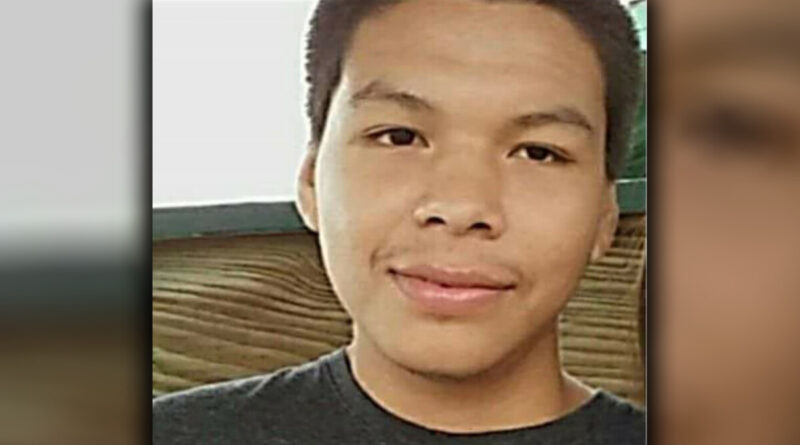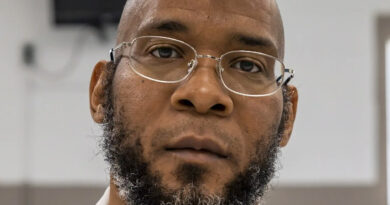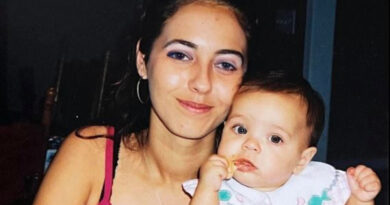Jeremy Jourdain Disappeared on Halloween Night in Bemidji Minnesota
On the evening of October 31, 2016, 17-year-old Jeremy Leon Jourdain vanished without a trace in Bemidji, Minnesota. It was Halloween—a night when many teenagers are out celebrating, dressed in costumes, enjoying parties, or spending time with friends. For Jeremy, what began as a fun night with family and peers turned into a mystery that has lasted over eight years and counting.
Jeremy was a proud member of the Leech Lake Band of Ojibwe. Known for his tall frame—he stood about 6 feet 5 inches—and his quiet, respectful demeanor, Jeremy was not the kind of kid who would simply walk away from his life. He had no known issues at home, no trouble with the law, and no indication he was planning to run away.
But that night, something happened. And what exactly that was, no one truly knows.
The Last Known Movements
Jeremy had traveled from Cass Lake to Bemidji, about a 15-mile drive, to celebrate Halloween with friends and family. At some point during the night, he and others were at a relative’s home on the 900 block of Carter Circle Southeast.
Around midnight, for reasons still unknown, Jeremy left the house abruptly on foot. Witnesses say he left without a coat or cell phone, wearing just blue jeans and a blue and gray sweatshirt. It was cold—low temperatures were around freezing. It was out of character for him to leave like that, and even more puzzling that he didn’t come back.
His family reported him missing the following day. Since then, there has been no confirmed sighting of Jeremy Jourdain.
Immediate Search and Community Involvement
As soon as the report came in, the Bemidji Police Department launched a search operation. With the help of local volunteers, K-9 units, and drone technology, officials canvassed the area surrounding Carter Circle, focusing on wooded areas, water bodies, and trails that Jeremy could have accessed on foot.
Despite these efforts, no trace of him was found—not a shoe, not an article of clothing, not a single clue.
Over the following weeks, the search expanded. Community members organized vigils, flyering campaigns, and door-to-door awareness drives. But as winter set in, hopes began to dwindle.
Theories and Speculation
Jeremy’s sudden and unexplained disappearance has led to several theories—none confirmed, all chilling in their possibilities.
He Left Voluntarily and Disappeared
This theory has little traction. Jeremy didn’t take his phone or any belongings. He had no money, no extra clothes, and no known plan to leave home. He also had no history of running away. His family has repeatedly stated that he wouldn’t have left without telling someone.
He Got Lost or Succumbed to the Elements
Given that he was dressed lightly in freezing temperatures, it’s possible that Jeremy became disoriented or suffered from hypothermia. However, the extensive search efforts—including trained dogs and aerial scans—turned up no evidence to support this idea.
Foul Play
The most troubling theory is that Jeremy encountered someone after leaving the house who harmed him or coerced him. There are whispers and unconfirmed rumors in the community suggesting tension or arguments before he left. Some have speculated that he was being followed.
To this day, police have not publicly named any suspects, nor have they made any arrests. Still, the idea of foul play remains a central line of inquiry.
The Role of Race and Visibility
Jeremy is one of many missing Indigenous youth in the United States whose cases have gone largely underreported. While white children and teens often dominate media coverage, Native American families have historically had to fight to get attention on their cases.
Jeremy’s mother, Theresa Jourdain, has spoken candidly about the pain of not just losing her son, but also feeling that his disappearance didn’t receive the urgency it deserved. Her voice joined the broader Missing and Murdered Indigenous People (MMIP) movement—a growing effort to bring justice and resources to Indigenous families.
In Minnesota, this movement has grown stronger in recent years, particularly with the establishment of the state’s Missing and Murdered Indigenous Relatives (MMIR) Office, the first of its kind in the nation.
Renewed Awareness Through Technology
In 2024 and 2025, Jeremy’s face began appearing again—this time across billboards and gas station TV screens throughout Minnesota, Wisconsin, Iowa, and the Dakotas. The initiative was spearheaded by the National Center for Missing & Exploited Children (NCMEC) and Gas Station TV (GSTV).
Every time someone fuels up their vehicle, they may see Jeremy’s photo, alongside a number to call with information. This large-scale digital campaign is part of a broader strategy to generate new leads, especially as his 26th birthday passed in February 2025.
Age Progression and Posters
To help the public recognize him, even years later, NCMEC released age-progressed images showing what Jeremy might look like at 23 and 26. These forensic reconstructions are created by artists who study photos of the missing person’s family to project facial development accurately.
These images have been circulated widely on social media, printed flyers, and news coverage. They’re posted on the NCMEC website, on digital billboards, and now, even on televisions at over 1,900 gas stations.
The Emotional Toll on the Family
Theresa Jourdain has been the public face of the search for Jeremy. She has never stopped organizing, posting updates, and pleading for information. On the Facebook page “Let’s Bring Jeremy Home,” she shares memories, speaks directly to her son, and thanks the community for their support.
She often says: “We think of you every day. We love and miss you very much.”
The pain of not knowing is its own kind of cruelty. No funeral. No closure. Just a gaping hole filled with silence and questions.
Indigenous Advocacy and Systemic Change
Jeremy’s case is one of the many that has fueled legislative and advocacy efforts to better protect Indigenous communities. Statistics show that Native Americans are disproportionately represented in missing persons cases, yet often lack the media coverage and law enforcement attention that others receive.
Organizations like the MMIR Office, Native Justice Coalition, and Not Our Native Daughters continue to pressure for better protocols, funding, and cultural understanding in cases involving Indigenous youth.
Why Jeremy’s Story Matters
Jeremy Jourdain didn’t disappear from a war zone or a remote jungle. He disappeared from a residential neighborhood in northern Minnesota. No one saw anything. No one heard anything. And nearly a decade later, no one has come forward with the truth.
His case underscores the chilling reality that a person can vanish from the most familiar places. But it also reminds us of the resilience of families who refuse to give up, the communities that continue to hope, and the power of collective memory.
Jeremy is more than a missing poster. He is a son, a brother, a friend. His story matters because every missing person matters—regardless of race, income, or location.
Discover more from City Towner
Subscribe to get the latest posts sent to your email.




